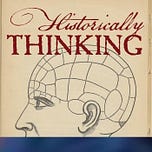Originally published on August 26, 2024 (Episode 372)
Introduction
John Trumbull must be the only painter (or sculptor; or performance artist) in the history of American art to insist upon being addressed by his military rank. He was Colonel Trumbull until he died. But it was not Trumbull’s feats in battle or in managing correspondence that won him fame, but what he put on canvas.
Hanging in the rotunda of the U.S. Capitol are four of the paintings in which he sought to preserve memories and teach lessons of the American Revolution: the ethics appropriate to war; democratic and republican virtue; political power flowing from the people; and the need to relinquish that power when duty demanded it. Some of the most recognizable images of the Revolution—the Death of General Warren at the Battle of Bunker’s Hill or The Declaration of Independence—are Trumbull’s paintings. If occupying space rent-free in posterity’s imagination is ever the ambition of an artist, then Trumbull succeeded.
With me to discuss the life, art, and civic teaching of John Trumbull is Richard Brookhiser, historian, journalist, and author of a shelf of books on the American founders. His most recent is Glorious Lessons: John Trumbull, Painter of the American Revolution (Yale, 2024).
About the Guest
Richard Brookhiser is a senior editor of National Review and the author of numerous books on the American founders, beginning with Founding Father: Rediscovering George Washington (Free Press, 1997).
For Further Investigation
Richard Brookhiser, Glorious Lessons: John Trumbull, Painter of the American Revolution (Yale, 2024).
—, Founding Father: Rediscovering George Washington (Free Press, 1997)
Related Episodes
“The First Martyr of the American Revolution” (on Joseph Warren)
“Revolutionary Age” —visual culture and political imagery of the 18th century
“Men on Horseback”—in part about the revolutionary’s image
Other Resources
John Walsh, “Let This Be a Lesson: Heroes, Heroines, and Narrative in Paintings at Yale,” esp. Lecture 7 (Benjamin West) and Lecture 8 (John Trumbull on Bunker Hill)
Listen & Discuss
Do Trumbull’s paintings shape how we see the American Revolution more than the documents themselves? Share your take in the comments, and pass this episode to a friend who still remembers the Declaration of Independence painting from their school textbook.





